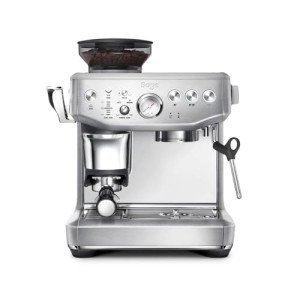The Rise of Home Espresso Machines: A Comprehensive Guide
As coffee lovers continue to look for fresh and tasty brews in the house, the appeal of home espresso machines has risen over the last few years. No longer simply the domain of coffee shops and coffeehouse, these machines empower individuals to craft barista-quality espresso beverages from the convenience of their kitchens. This post will check out the various kinds of home espresso machines, their functions, and factors to consider for choosing the ideal one. Furthermore, it will provide a selection of FAQs to help prospective buyers make informed decisions.
Types of Home Espresso Machines
Home espresso machines can be classified into several categories based on their mechanisms and user-friendliness. Each type has its special features, pros, and cons.
| Type | Description | Pros | Cons |
|---|---|---|---|
| Manual Espresso Machines | Requires the user to manually manage the brewing procedure, involving strategies like pulling a lever to create pressure. | - Complete control over developing process - Compact design | - Requires skill and practice - Time-consuming |
| Semi-Automatic Machines | Machine automates water circulation and pressure, but the user still manages the dosing and duration of the developing procedure. | - Balance of automation and control - Versatile | - Learning curve for perfecting strategies |
| Totally Automatic Machines | Automates the entire developing process, from grinding to brewing, often with programmable settings for tailored beverages. | - Extremely user-friendly - Quick and convenient | - Less control over the developing procedure - Higher price point |
| Capsule or Pod Machines | Utilizes pre-packaged espresso capsules or pods to create coffee quickly and easily. | - Extremely simple to use - Minimal clean-up | - Limited flavor range - More pricey per cup than ground coffee |
| Super-Automatic Machines | Integrates features of fully automatic machines with built-in grinders, enabling users to brew whole bean espresso and milk-based beverages with one touch. | - All-in-one convenience - Ideal for milk-based beverages | - Often the most pricey - Can be large |
Features to Consider
When selecting a home espresso machine, prospective buyers should consider the following features to guarantee they choose a machine that satisfies their requirements:
Grinder Type:
- Built-in grinders can supply fresher grounds however may need more maintenance.
- Different grinders enable for more personalization of grind size.
Pressure:
- Look for machines that produce at least nine bars of pressure, which is ideal for brewing espresso.
Water Temperature Control:
- Machines with adjustable temperature level settings allow for better extraction of flavor from beans.
Milk Frothing Options:
- Consider whether you want a manual steam wand for frothing or an automatic milk frother for convenience.
Reduce of Cleaning:
- Machines with detachable parts and self-cleaning functions significantly reduce clean-up time.
Size and Design:
- Ensure the machine fits comfortably in your cooking area and lines up with your visual preferences.
Budget:
- Set a budget before starting your search, as costs can range significantly from affordable models to high-end machines.
Advantages of Home Espresso Machines
Owning a home espresso machine offers various advantages:
- Cost-Effective: Over time, developing espresso in the house can save coffee lovers money compared to regular café gos to.
- Personalization: Users can explore various beans, grind sizes, and brewing methods to find their best cup.
- Convenience: The ability to brew espresso at any time removes the requirement to head out to a café, especially beneficial throughout late nights or mornings.
- Quality Control: With a home machine, people have total control over the quality of ingredients and developing procedures.
Drawbacks of Home Espresso Machines
Nevertheless, there are some drawbacks to consider:
- Initial Investment: High-quality espresso machines can be expensive, needing a significant in advance financial investment.
- Knowing Curve: Mastering the art of espresso brewing can take time and practice, which may be daunting for novices.
- Upkeep: Like any home appliance, espresso machines need routine cleansing and maintenance to ensure optimum efficiency.
Frequently asked questions
1. What is the best type of home espresso machine for newbies?
Answer: For beginners, a semi-automatic machine is typically recommended as it offers a balance in between control and automation, permitting you to learn the essentials without overwhelming intricacy.
2. How much should I invest on a home espresso machine?
Response: Entry-level machines can begin around ₤ 100 to ₤ 300, while higher-end models can range from ₤ 500 to over ₤ 2000. It's vital to set a budget based upon your expected use and wanted features.
3. Do I require a different grinder?
Response: While some espresso machines come with integrated mills, investing in a separate grinder permits greater modification and ensures better quality grounds.
4. How often should I clean my espresso machine?
Answer: Cleaning frequency can vary by machine type, but it's typically recommended to clean the machine after each use and perform deep cleansings weekly or monthly, depending on use.
5. Can I make milk-based beverages with any espresso machine?
Response: Not all machines feature milk frothing abilities. If you enjoy drinks like lattes or coffees, try to find a machine with a steam wand or automatic frother.
Home espresso machines are changing the way coffee connoisseurs enjoy their beloved brews. With various types and advanced functions readily available in the market, there is something for everybody. Whether it's the happiness of creating unique dishes or merely enjoying the ideal shot of espresso, buying a home espresso machine can boost both the coffee-drinking experience and the quality of life for coffee fans everywhere. As with any financial investment, it is important to weigh the advantages versus the potential drawbacks and pick a machine that effortlessly fits both your lifestyle and choices.

